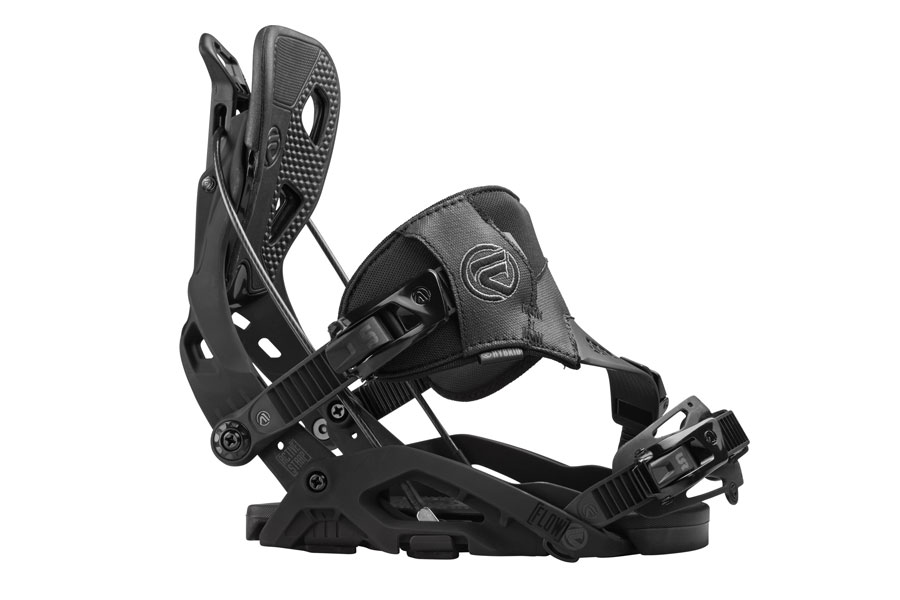- About
- Courses
-
Destinations
EuropeNew Zealand
- Journal
- Contact
Flow bindings or ratchet bindings? You’ll see snowboarders of all kinds debating the issue, and the camp you sit in usually boils down to personal preference.
We cover the pros and cons of each so you can make the right choice when deciding on your next setup.
Flow bindings
Flows are the original ‘rear entry’ binding. They have one large strap section that is fixed over the top of the foot and a high-back that drops down for access into the binding. They are considered the ‘marmite’ of snowboarding bindings, with most riders either loving or hating them.

Pros
Cons
Ratchet bindings
The vast majority of bindings on the market are based loosely on the traditional ratchet model. They have two straps that fix your foot to the snowboard, one around the ankle and one over the toe. The ‘high-back’, where the back of your boot rests, is fixed. These bindings clearly do the job, when you consider how many models use this formula.

Pros
Cons
The verdict
Flow bindings came along to improve ease of use and may be marginally quicker to put on. But do they solve a problem that doesn’t really exist, and is there a compromise on performance?
If you were to cast popular opinion, you’d probably find that most snowboarders still sit in the ratchet camp. When you look around at people who live or do seasons in the mountains, you’ll rarely see anyone wearing flows. Many riders seem to find that traditional bindings provide more control, are easier to adjust, and are actually just as easy to put on a lot of the time.
Both types have their advantages and drawbacks. It comes down to personal preference and what you feel comfortable in. Your best bet is to test out a range of bindings and form your own opinion on what works for your riding style.
Hybrid bindings
With fresh ideas and technology advances, there are always new bindings entering the fray and shaking up the industry. Alongside flow bindings, you’ll find other rear-entry bindings that also have adjustable toe and heal straps. As combined bindings, these may possess many of the benefits of both flow and ratchet bindings. But the question remains: do they solve a problem that isn’t there, and add unnecessary weight and complications?
As a wise man once said, if it ain’t broke, don’t fix it.
Master your sport
Once you’ve nailed down your setup, it’s time to charge. And whatever your binding choice, you can always push your performance. Discover our snowboard instructor courses / snowboard improvement courses and take your skills to a new level.
We look forward to speaking with you.